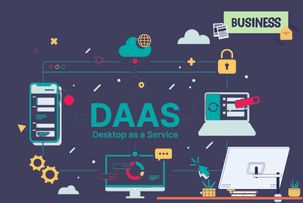Mastering the 5 ITIL Service Strategy Processes
12:16, 22.01.2024
To succeed in Service management you need a carefully developed long-term plan or a strategy. Although you might dedicate time and resources intor developing this plan on you own, in fact, you don’t need to, since you can benefit from an already developed and established strategy that you only have to apply. This is the case with ITIL which is short for Information Technology Infrastructure Library, which is a collection of practices IT businesses may follow in order to manage their services according to the actual needs of the business. In the following article, we want to provide you with a better idea of what ITIL is to see, and in which ways it can be beneficial to your business.
Understanding ITIL Service Strategy Essentials
Exploring the Phases within the ITIL Lifecycle
The key components of the ITIL service lifecycle are the phases of the ITIL lifecycle. They are Service Strategy, Service Design, Service Transition, Service Operation, and Continual Service Improvement.
- Service strategy: The objective of this stage is to figure out the general IT service strategy and understand the business objectives and customer needs. There are the following key processes that take place at this stage:
- Service portfolio management: Managing the entire lifecycle of services, from concept to retirement.
- Financial Management for IT Services: Making sure the available finances are sufficient.
- Demand Management: Predicting the expected demand for the service.
- Strategy Management for IT Services: Setting plans and perspectives.
- Business Relationship Management (BRM): Maintaining positive and long-term relationships between the service provider and customers.
- Service Design: The objective of this stage is to design effective and efficient IT services that meet business and customer requirements. The key processes of this stage:
- Service Catalog Management: Maintaining a catalog of available services and ensuring accurate information is available to customers.
- Service Level Management: Defining, negotiating, and agreeing upon service levels with customers.
- Capacity Management: Ensuing IT resources to meet current and future business needs.
- Availability Management: Ensuring that IT services are available when needed.
- IT Service Continuity Management: Planning for and managing the recovery of IT services in the event of a disaster.
- Information Security Management: Managing the confidentiality, integrity, and availability of information.
- Service Transition: The objective of this stage is to transition either new or changed services into the production environment while controlling the risks of failure and disruption. The key processes of this stage are:
- Change Management: Controlling the lifecycle of all changes to the IT infrastructure.
- Service Asset and Configuration Management: Maintaining information about configuration items and their relationships.
- Release and Deployment Management: Planning, scheduling, and controlling the movement of releases to test and live environments.
- Knowledge Management: Capturing, storing, and retrieving knowledge, ensuring it is available for the right people at the right time.
- Service Operation: At this stage the objective is to ensure that IT services are delivered efficiently on a daily basis. Its key processes include:
- Event Management: Detecting and responding to events that may impact services.
- Incident Management: Minimizing the impact of incidents and restoring normal service operation.
- Problem Management: Minimizing the adverse impact of incidents and problems on the business.
- Request Fulfillment: Fulfilling standard requests for services.
- Access Management: Managing authorized access to services.
- Continual Service Improvement (CSI): The last stage is about ceaselessly improving the quality of service. The main process that takes place at this stage is continuous review and improvement processes through a seven-step cycle of identifying opportunities, defining what to measure, gathering data, processing data, analyzing information, presenting and using information, and implementing improvements.
Unveiling the Four P's of Service Strategy
Another series of building blocks that make up service strategy are called “the four P’s” based on the letter each of them occasionally starts with. These are:
Perspective: Analyzing the possible perspectives and vectors of the service strategy development.
Position: Analyzing the strategies of other players on the market to figure out where you are and where you have to head.
Plan: Firuging out, what kind of actions may lead to reaching your goals.
Pattern: The plan of regulating actions that make up the lifecycle of your organization, including such common routines as management systems, schedules, budgets, policies, and processes.
Delving into the 5 Key ITIL Service Strategy Processes
Among the components described above, the last but not least thing to keep in mind when it comes to ITIL are the 5 key service strategy processes.
They include:
- Strategy management for IT services
- Service portfolio management
- IT financial management
- Demand management
- Business relationship management
1. Navigating Strategy Management for IT Services
Strategy management for IT services is about planning the strategy itself and making sure that it aligns with the organization. The key stages of this process are assessment, definition, and execution of strategies for your services.
- Assessment: At this stage, you have to figure out, where on the market your business currently is. Analyze the perspectives that are open to you as well as obstacles. Pay attention to what you can offer, what your target audience is as well as the same things about your competitors.
- Definition: Once you have assessed some fundamental variables, you can define the goals of your service offerings and your customer segments.
- Execution: Once all goals have been defined, you can finally move on to the implementation stage and plan the actual execution of your strategies.
2. Mastering IT Financial Management
The financial side of service management encompasses such stages as accounting, budgeting, and charging services so the service eventually produces benefits.
Accounting: Accounting is responsible for calculating the expenditures and profits of your project. Accounting is usually performed by a dedicated specialist. This specialist performs analyses of costs and benefits, evaluates expenditures, and keeps track of every cent spent. In this way, you have an accurate idea about the conditions of your finances and can make weighed decisions about further investments.
Budgeting: Calculating and planning your budget is fundamental for the success of your IT services. Generally, you would revise and plan your budget every year, not forgetting about its constant monitoring.
The budget for IT services can be categorized into capital expenditures, operations costs, and strategic investments.
Charging: Charging refers to collecting fees from your customers for using your services. It encompasses shaping prices and organizing pricing plans as well as a chargeback system.
3. A Closer Look at Service Portfolio Management
Service portfolio refers to the general collection of services you offer. The purpose of service portfolio management is to make sure that the services you offer correspond to your strategies and objectives. In this way, you can adjust your services to your current interests, remove obsolete services, and add new ones.
The service portfolio consists of three elements:
- Service Catalog
- Service pipeline
- Retired services catalog
The services catalog refers to what services you offer at the moment.
The service pipeline encompasses services that aren’t yet accessible to your customers, those who are under development or revision. Besides that, the pipeline also covers your plans and perspective on the service you offer, and the planned future of the current services.
The retired services include the services you used to offer and have removed for this or that reason.
Service portfolio management is generally about following your services through their lifecycle in a range of aspects.
Basic portfolio management includes such 4 steps:
- Determining, what you expect to obtain through a certain service or adjustments to the service.
- Figuring out, how the introduction of the new service or modifications to the existing one will affect the rest of your services.
- Approving the service formally and proceeding to the active development and deployment stage.
- Providing the service with necessary resources and decisions to be finally introduced.
During these steps, you’ll figure out responses to various questions that may arise during the lifecycle of a service:
- What is the purpose of the service for your customers?
- How does the service compare to services offered by other companies?
- What are the good and bad sides of the service?
- Is the service accompanied by any risks?
- How to provide the service with all the necessary resources?
4. Demystifying Demand Management
Demand management is about understanding, analyzing, and taking advantage of the potential desires of your target audience. By understanding the demand, you can organize your service in a way that exactly meets your customer’s needs while you don’t have to make extra expenses. There are three main elements of demand management – analyzing, anticipating, and influencing.
Analyzing: This practice involves collecting data about the activities related to the service from different sources. This may include the numbers of when your service was purchased, when, by whom, and in what regions. Such the network data on your website, like traffic, and network usage, can also be helpful to get a general picture of visits to your website and take advantage of it.
Anticipating: Use various methods to establish communication with your customers. Analyze trends and try to figure out what the potential future needs of your customers.
Influencing: In certain cases, you might want to direct the needs of your customers to make them better correspond with the conditions of your offers. This can be expressed in the form of additional fees for exceeding service usage or bandwidth throttling. These practices may be especially relevant when your business resources are limited and excessive demand will be associated with financial strains.
5. Excelling in Business Relationship Management
Managing relationships with your customers is crucial for ensuring long-term loyalty. This encompasses practices that ensure that the service delivery makes your customers as satisfied as possible. They include establishing clear and efficient communication with your customers, attracting new customers, analyzing both positive and negative feedback, and taking steps to better satisfy the demand.
Final words
This has been the overview of some 5 ITIL Service Strategy Processes. Following them may give a clear and logical backbone to managing and developing your business, so we hope that the information presented will be helpful and wish you good luck.


